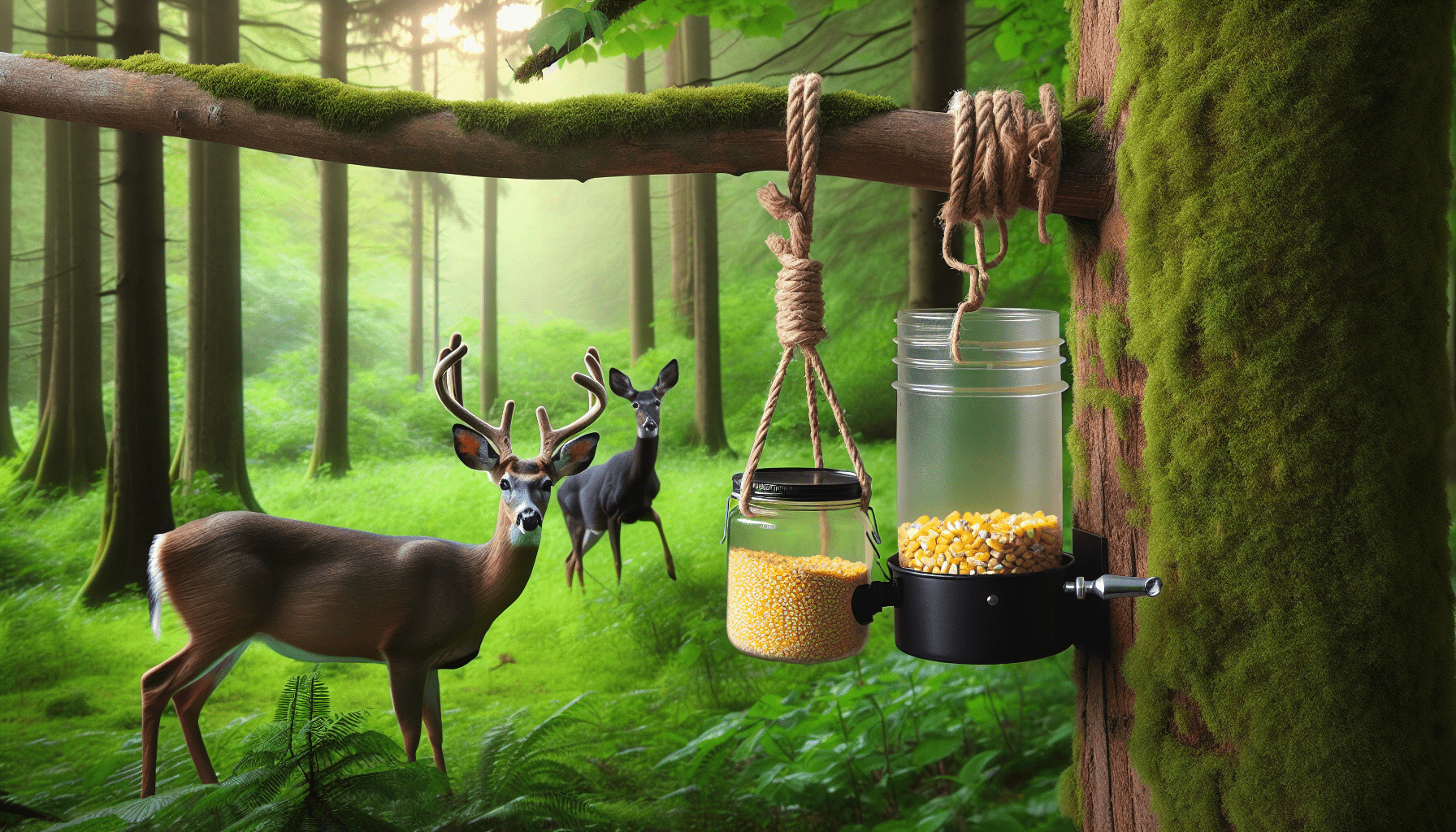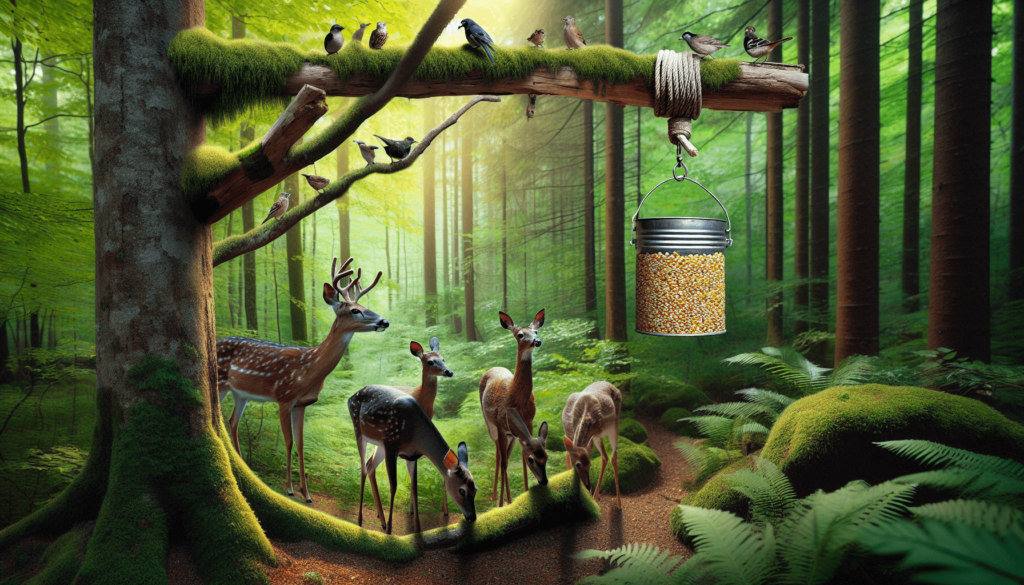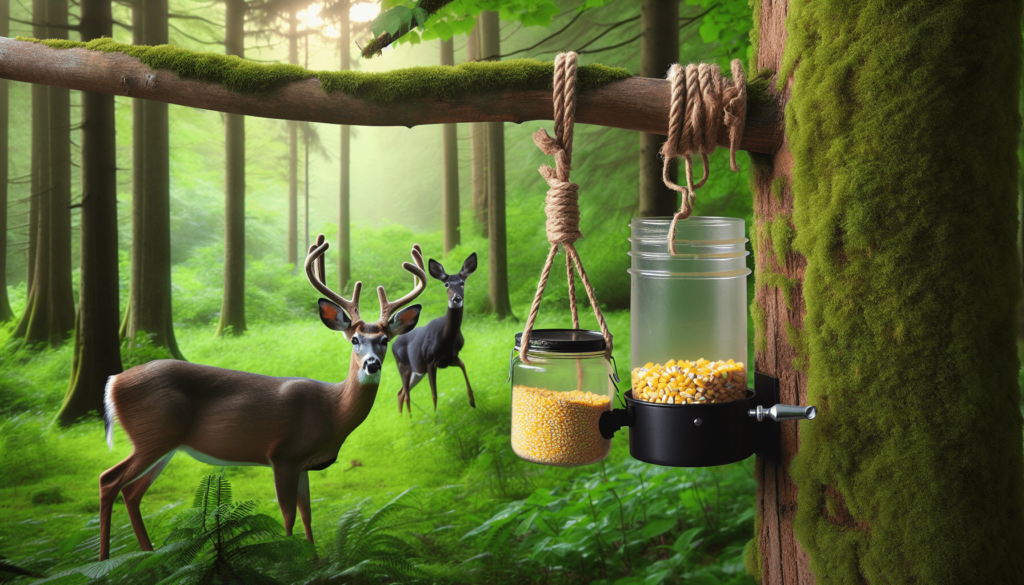
Have you ever wondered how to create a DIY hanging deer feeder that offers both practicality and effectiveness? Whether you’re an avid hunter, a wildlife enthusiast, or someone who just enjoys observing nature, having a reliable deer feeder can make a world of difference. This tutorial will guide you through the process, step by step, to build your own hanging deer feeder.
Understanding the Importance of a Deer Feeder
Deer feeders serve multiple purposes, from supporting wildlife conservation to assisting in population control and improving hunting outcomes. A well-constructed deer feeder can help ensure that deer have access to nutrients during critical periods, like wintertime, when natural food sources might be scarce.
Benefits of a Hanging Deer Feeder
One significant advantage of a hanging deer feeder is that it keeps the feed off the ground, reducing the risk of contamination from parasites or mold. Additionally, a hanging feeder can be strategically placed to minimize human scent and presence, making the deer more comfortable in approaching the feeding area.
Materials You’ll Need
Before you start building, gather all the required materials. Here’s a handy table detailing what you will need:
| Item | Purpose |
|---|---|
| 5-gallon bucket | Feed container |
| Lid for the bucket | To keep the feed dry |
| Hanging hardware (chain, S-hooks) | To suspend the feeder |
| Drill and drill bits | For creating holes |
| PVC pipe (2-3 inches in diameter) | Dispensing mechanism |
| Nuts and bolts | Assembly of the feeder |
| Zip ties or metal clamps | Securing parts together |
| Rope or heavy-duty cord | For additional support |
| Measuring tape | Accuracy in measurements |
| Safety goggles and gloves | Personal safety |

Step-by-Step Guide
Now that you have your materials, follow these detailed steps to construct your DIY hanging deer feeder.
Step 1: Prepare the Bucket
First, take your 5-gallon bucket and make sure it’s clean and dry. If the bucket has been previously used, it’s crucial to clean it thoroughly to ensure no residue can contaminate the feed.
Step 2: Create the Dispensing Mechanism
Using your drill, create a hole at the bottom center of the bucket. This hole should be slightly smaller than the diameter of your PVC pipe to ensure a snug fit. The PVC pipe will act as the dispensing chute for the deer feed.
Step 3: Attach the PVC Pipe
Once the hole is drilled, fit the PVC pipe securely into the hole. This can be done using nuts and bolts to ensure it is tightly fixed. You may also want to seal around the base of the pipe with a waterproof adhesive to prevent any moisture from seeping into the feed.
Step 4: Install the Lid
Place the lid securely onto the bucket to keep your feed dry and protected. If the lid doesn’t fit tightly enough, consider using additional zip ties or clamps to ensure it remains secure, especially in adverse weather conditions.
Step 5: Add Hanging Hardware
Attach your hanging hardware — chains, S-hooks, or ropes — to the bucket. Depending on the weight of the feed, make sure the hardware is robust enough to support the entire load. Secure the hardware around the top edge of the bucket, distributing the weight evenly to prevent tipping.
Step 6: Find the Perfect Spot
Locate an ideal spot to hang your feeder. This should be a place where deer frequently visit but also has enough tree cover to provide some level of concealment. The feeder should be hung at a height that’s accessible to the deer but not easy for other animals to reach.
Maintenance Tips
Regular Cleaning
Keeping your feeder clean ensures that it remains a reliable food source for deer. Periodically remove old feed and clean the bucket thoroughly to prevent mold and contamination.
Monitoring Feed Levels
Regularly check the feed levels and replenish as necessary. This will not only encourage repeated visits from the deer but also ensure that they have a constant food supply.
Inspect the Hardware
Over time, the hanging hardware may wear out or rust. Inspect all chains, hooks, and ropes regularly and replace any components that appear compromised.

Choosing the Right Feed
Selecting the appropriate feed is just as crucial as the feeder’s construction. High-quality brands like Moultrie, American Hunter, and WILDGAME INNOVATIONS offer specially formulated deer mix that includes essential nutrients for optimal deer health.
Factors to Consider
When deciding on the ideal composition of your deer feed, consider the following:
-
Seasonal Requirements: Deer nutritional needs change with the seasons. During winter, high-carbohydrate and fat-rich feeds are essential, while in spring and summer, high-protein feeds are more beneficial for growth and development.
-
Local Regulations: Some areas have specific guidelines regarding the type of feed and feeding practices. Always check local wildlife regulations to ensure your feeding strategy is compliant.
-
Nutritional Balance: Opt for a balanced mix of carbohydrates, fats, and proteins. Look for feeds enriched with additional vitamins and minerals to promote overall health.
Enhancements and Customizations
If you’re interested in taking your DIY hanging deer feeder to the next level, here are some additional enhancements you can consider:
Feed Timer Mechanisms
Adding a feed timer mechanism can help regulate the dispensing times, ensuring feed is only available at certain hours. Brands like KUMFJ and On Time Wildlife Feeders offer advanced timer systems that can be easily integrated.
Solar Panels
Attaching a small solar panel to power any electronic components, such as timers or automatic dispensers, can make your feeder more eco-friendly and reduce the need for battery replacements.
Camouflage
Paint your feeder to blend harmoniously with the surrounding environment. This can help keep the feeding area discreet and reduce the chances of startling the deer.
Troubleshooting Common Issues
Problem: Feed Dispensing Too Quickly
If your feed dispenses too quickly, you may need to adjust the size of the dispensing hole or install a regulating mechanism. Similarly, altering the angle at which the feeder hangs can also moderate the dispensing rate.
Problem: Attracting Unwanted Animals
To deter other animals like raccoons or squirrels, consider modifying the feeder height or adding a baffle above the feeder that prevents non-target animals from climbing down to reach the feed.
Problem: Moldy Feed
To prevent mold, ensure your feeder is well-sealed and situated in an area that isn’t frequently exposed to rain or excessive moisture. Regular cleaning routines and occasional checks for water leakage will help maintain feed quality.
Legal and Ethical Considerations
When setting up any wildlife feeder, it is essential to consider the legal guidelines and ethical aspects. Ensure that you are compliant with local laws and regulations regarding wildlife feeding. Overfeeding or improper feed types can have detrimental effects on wildlife health and behavior, so always practice responsible feeding.
Local Regulations
Always check your local wildlife management agency’s guidelines. Some areas have strict rules on supplemental feeding, especially in relation to hunting.
Ethical Feeding
An ethical approach involves not over-relying on feeding to attract deer to hunting areas. The main goal should be to support wildlife, rather than manipulate behaviors adversely.
Reviews of Top Brands for Deer Feed
To ensure you’re using the best possible feed, here are some reviews of top brands, based on their reliability, nutritional content, and popularity among users:
Moultrie
Moultrie offers a range of feeds known for their high nutritional value and balanced vitamins and minerals content. Their products often include seasonal blends designed to meet the changing needs of deer throughout the year.
American Hunter
American Hunter provides robust, nutrient-rich feeds that have been shown to promote healthy growth and development in deer. They offer special blends that cater to different ecological needs and environments.
WILDGAME INNOVATIONS
WILDGAME INNOVATIONS is renowned for developing feeds that are both palatable and wholesome. Their products are designed with deer health in mind and include additives beneficial for both antler growth and overall wellness.
SolutionsPatIQ
SolutionsPatIQ combines innovation with science to provide feeds that support deer energy levels and nutrient absorption. Their brand is committed to sustainability and creating products that support wildlife conservation efforts.
Final Thoughts
Creating your own DIY hanging deer feeder can be a rewarding project that brings you closer to nature and supports local wildlife. By following this tutorial, you’ll have a functional feeder that’s both effective and easy to maintain. Remember, the key to success is regular maintenance, selecting the right feed, and adhering to ethical and legal considerations.
Embark on this project with enthusiasm, and soon enough, you’ll enjoy the fruit of your labor as deer frequent your feeder, providing you with countless opportunities to observe these magnificent creatures up close.



